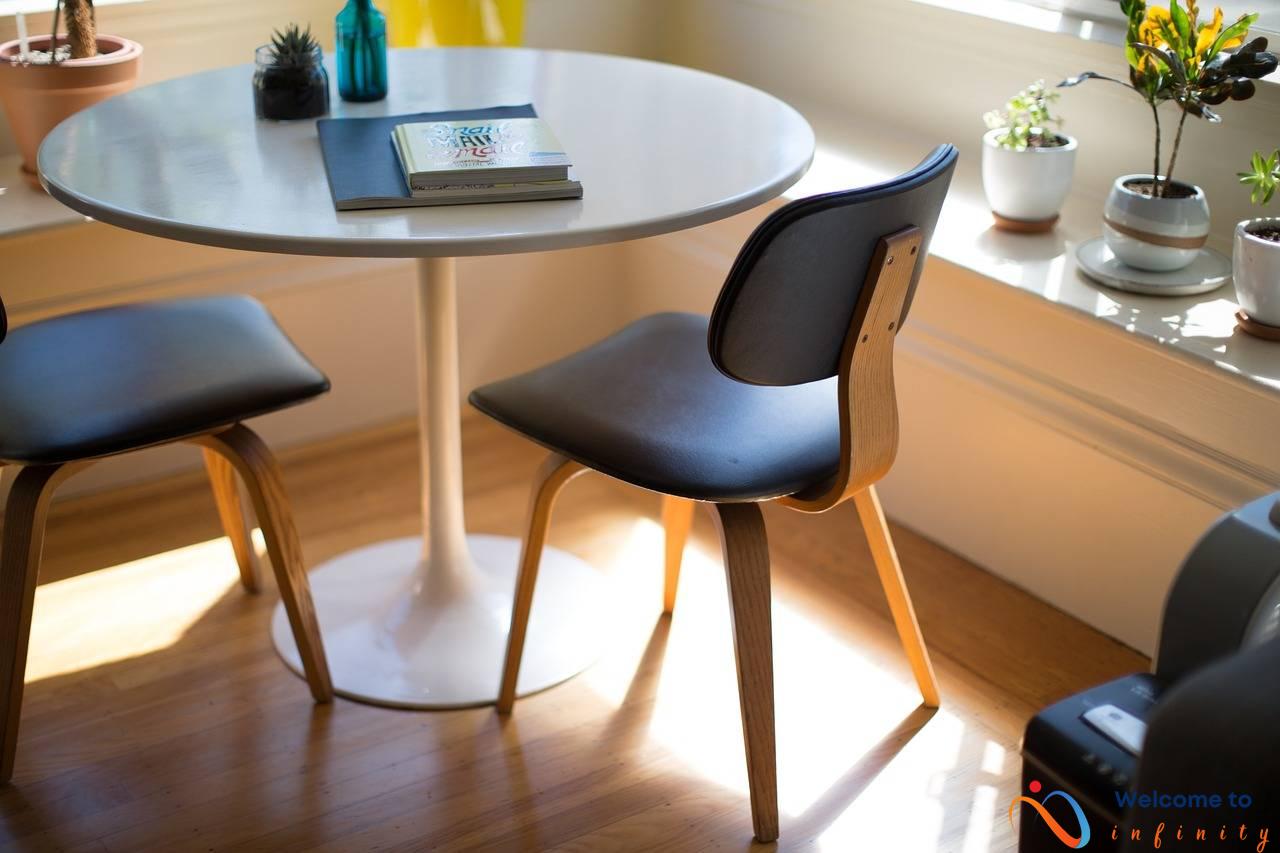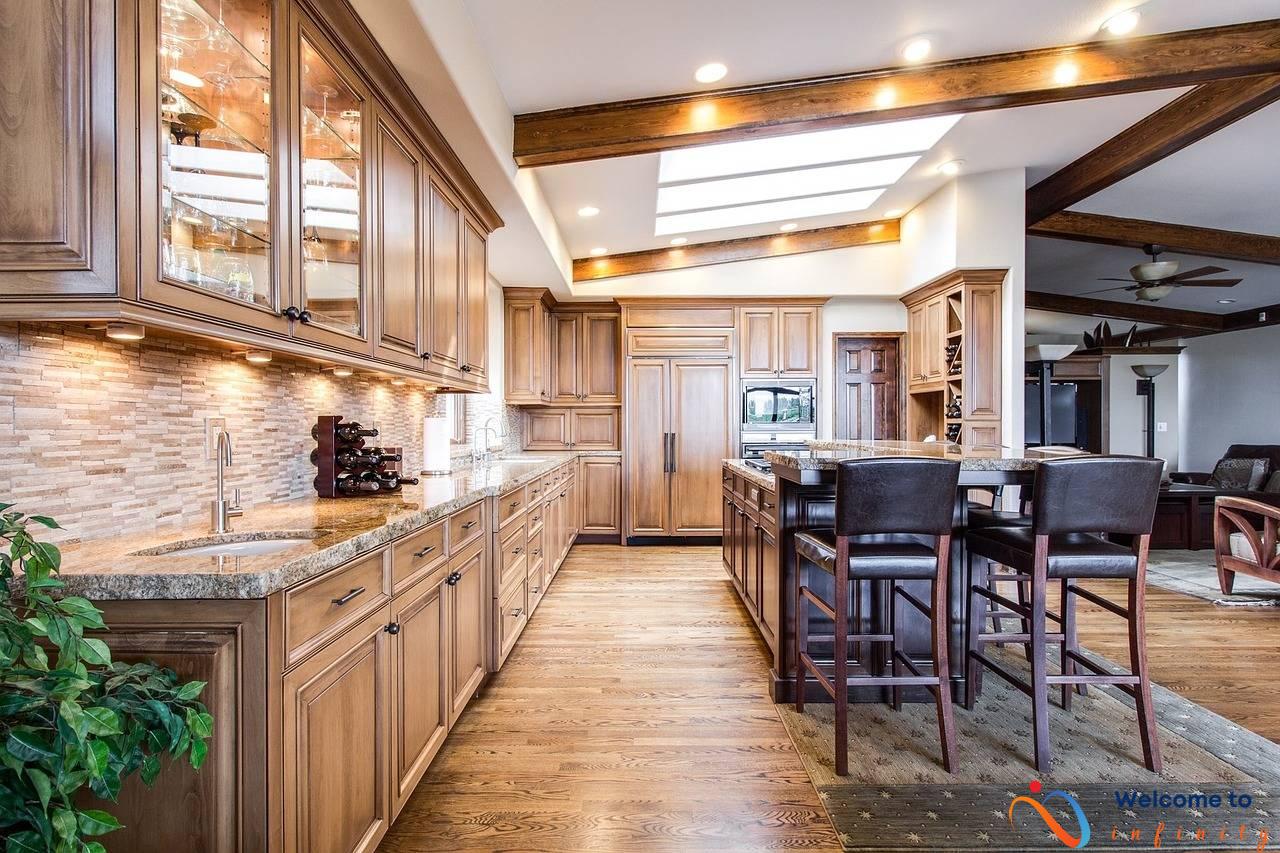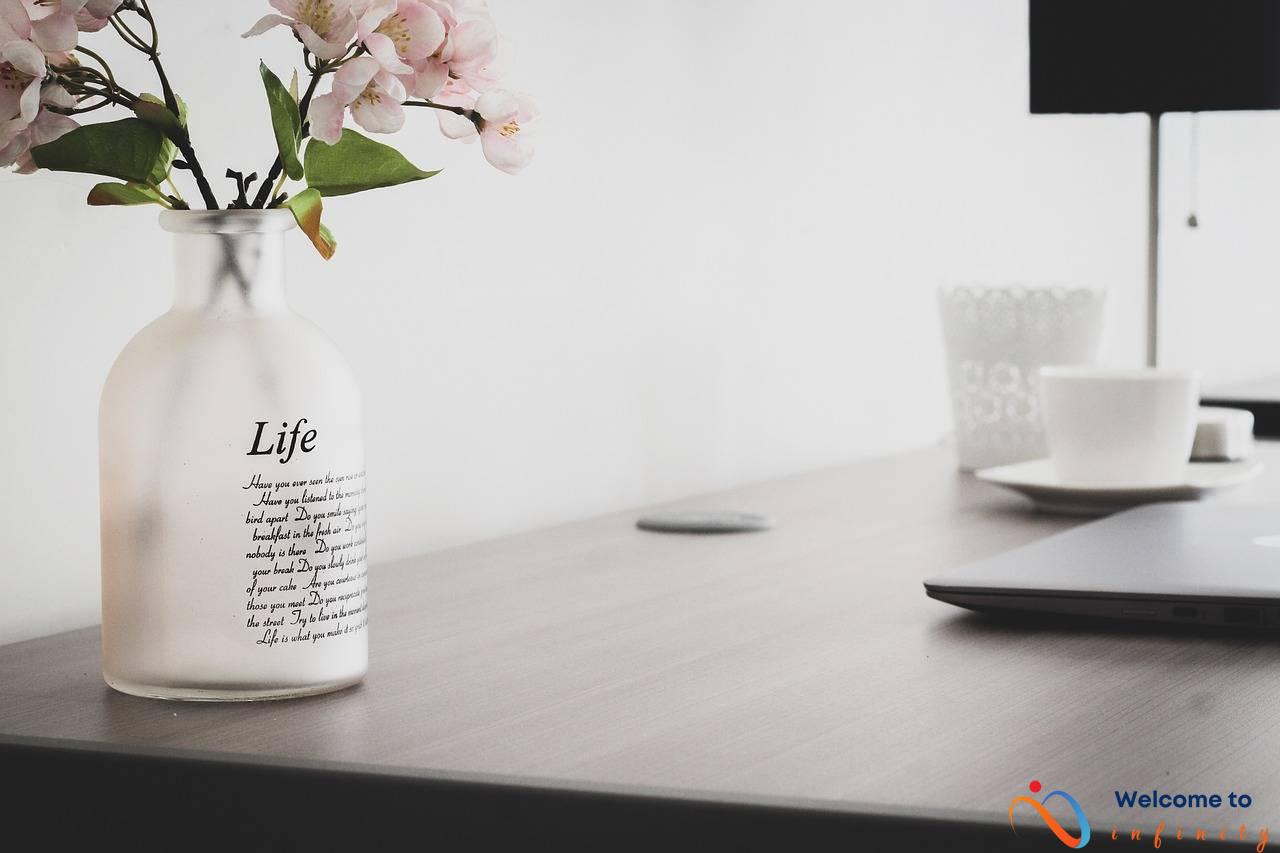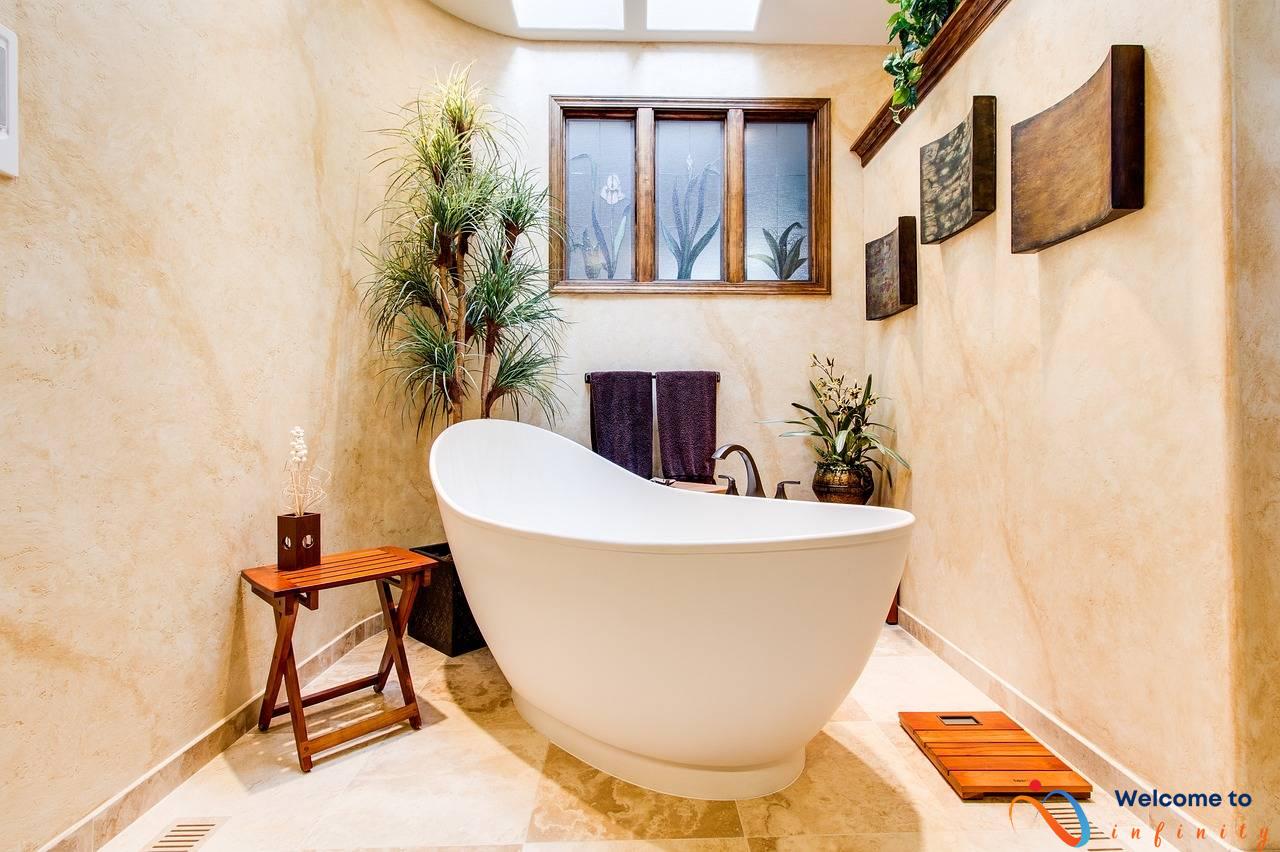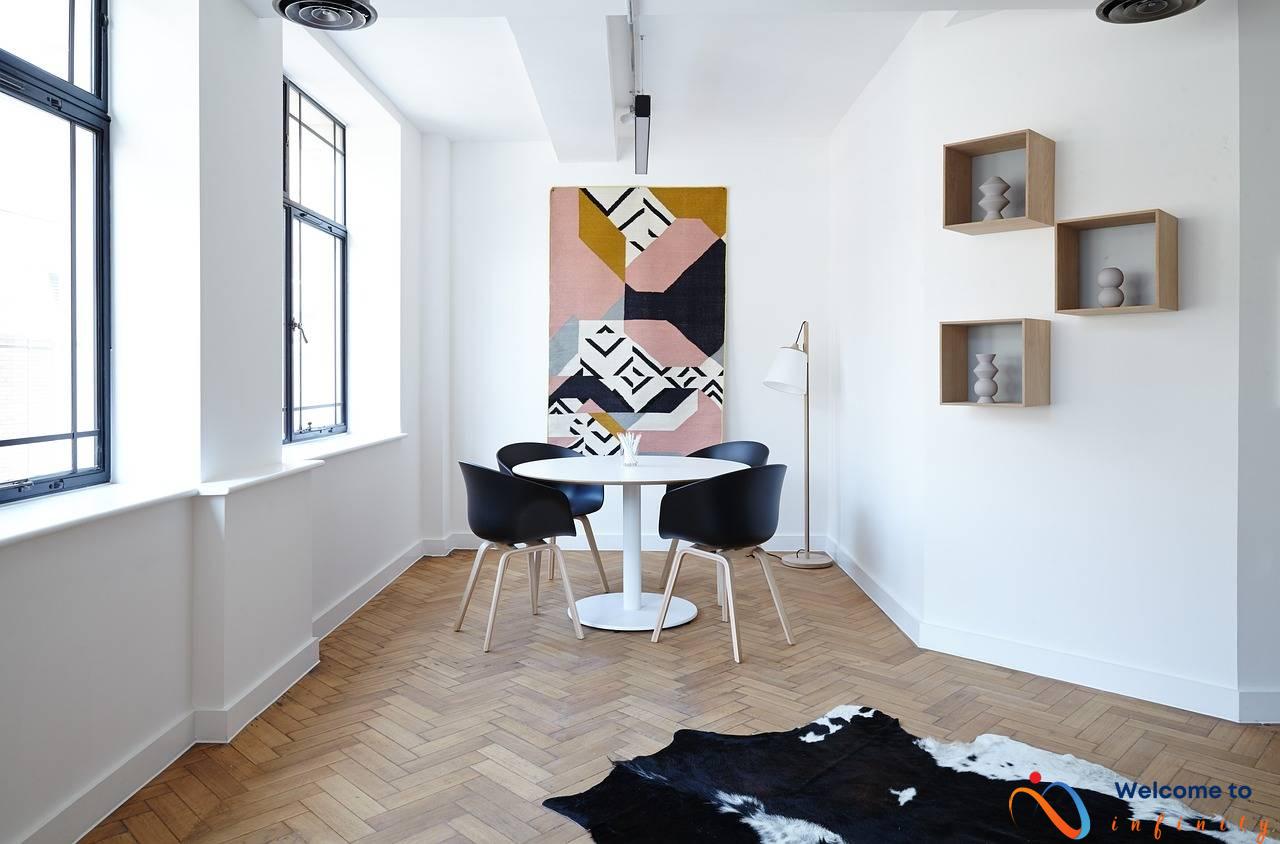The fusion of Mediterranean and mid-century modern design styles is taking the design world by storm. These two styles may have originated in different parts of the world and time periods, but when they are brought together, the result can be stunning. The warm and hearty Mediterranean style blends well with the bold and clean lines of mid-century modern design. The Mediterranean meets mid-century modern design creates an eclectic look that combines natural and organic elements with sleek and modern aesthetics.
The Mediterranean style is a reflection of the warm and sunny region that encompasses Southern Europe, north Africa, and the Middle East. Its distinct features include sun-drenched colors, intricate patterns, and textures that come from natural materials such as stone, tile, and wood. On the other hand, mid-century modern design is characterized by bold, clean lines, and an emphasis on functionality. This design movement emerged in the mid-twentieth century, during a time of post-war optimism and social change in the United States and parts of Europe.
The fusion of these two design styles is exciting as it borrows the best elements of each style while creating something new. The result is the birth of a new style that is fresh and visually appealing, which can be seen in both residential and commercial spaces. The incorporation of mid-century modern design in Mediterranean décor results in clean-lined furniture that features warm metals, neutral color palette, and natural wood and stone elements that create a warm, comfortable, and inviting environment.
The History of Mediterranean Design
Mediterranean design is a style that originated in the countries surrounding the Mediterranean Sea, including Greece, Italy, and Spain. It is characterized by warm colors, ornate patterns, and natural materials such as marble and terracotta. The style evolved from the ancient civilizations that flourished in the region, including the Greeks, Romans, and Moors.
Greek architecture, with its columns and pediments, had a profound influence on Mediterranean design. The Romans, who conquered Greece, also contributed to the style with their use of arches, vaults, and concrete. The Moors, who invaded Spain in the 8th century, introduced Islamic design elements such as intricate tilework and geometric patterns.
During the Renaissance, Mediterranean design reached new heights with the construction of grand palaces, cathedrals, and public buildings. In the 16th century, the style spread to the New World with the Spanish conquistadors, who built opulent homes and churches in Mexico and South America.
In the 19th and 20th centuries, Mediterranean design was popularized in the United States by architects such as Addison Mizner and Bertram Goodhue. Their use of Spanish Revival and Mediterranean Revival styles in residential and commercial buildings helped establish the style as a staple of American architecture.
today, Mediterranean design continues to evolve, with designers incorporating modern elements such as clean lines and minimalist aesthetics. The style remains popular in warm climates, particularly in coastal regions such as California and Florida.
The Rise of Mid-Century Modern Design
Mid-century modern design rose to prominence in the aftermath of World War II, a time when people craved simplicity, comfort, and practicality. The optimism of post-war America played a significant role in shaping the design style, which is characterized by clean lines, simple shapes, and a focus on functionality.
Mid-century modern design was influenced by several factors, including the Bauhaus movement, which emphasized the integration of art, craft, and technology. The style was also shaped by the rise of a new middle class, who demanded affordable and stylish furniture and decor. Additionally, advancements in technology and materials allowed designers to create new shapes, forms, and textures, which they incorporated into their work.
The cultural and societal changes of the 1950s and 1960s also had a profound impact on mid-century modern design. With the rise of suburban living and the invention of the television, the way people lived and interacted with their homes began to change. Homes were no longer just places to sleep and eat; they became spaces for entertainment, relaxation, and self-expression. The mid-century modern design style was a reflection of this shift, with its emphasis on open-plan living, multi-functional furniture, and a focus on personal style.
In summary, mid-century modern design emerged as a response to post-war values and cultural shifts, as well as advancements in technology and materials. Its focus on simplicity, practicality, and personal expression made it a seminal design style that continues to influence designers and homeowners to this day.
Defining Characteristics
Mediterranean and mid-century modern design have distinct features that make them easily recognizable. Mediterranean design is known for its warm, earthy colors and textures that evoke the feeling of being by the sea. Mid-century modern design, on the other hand, is characterized by clean lines, bold shapes, and bold pops of color.
In terms of color and texture, Mediterranean design often incorporates shades of blue, green, yellow, and orange, along with materials such as terra cotta, stone, and wrought iron. Mid-century modern design, on the other hand, favors a more pared-down color palette, with bright hues such as coral, turquoise, and mustard yellow used sparingly.
Furniture and decor elements are also defining characteristics of these design styles. Mediterranean design often features ornate wrought iron furniture, intricately patterned tiles, and lush greenery. Mid-century modern design, by contrast, emphasizes simplicity and functionality, with pieces such as the Eames lounge chair and streamlined teak furniture.
Despite their differences, these two design styles are not mutually exclusive. In fact, designers are increasingly incorporating elements of both into their work to create a unique fusion. This can be seen in the use of Mediterranean-style materials such as terrazzo floors and mid-century modern furniture in the same space.
Ultimately, the fusion of Mediterranean and mid-century modern design creates a harmonious blend of warmth and simplicity, resulting in a unique aesthetic that is both comfortable and chic.
Colors and Textures
When it comes to Mediterranean and mid-century modern design, colors and textures play a significant role in evoking their distinct styles. Mediterranean design is known for its warm and earthy tones, such as terracotta, sand, and olive green. These colors are reminiscent of the Mediterranean coastline and its sun-kissed landscape.
On the other hand, mid-century modern design incorporates bold and vibrant colors, such as mustard yellow, turquoise, and orange. These colors bring a pop of energy and life into the space, adding a playful touch to the otherwise minimalist style.
Textures are also an essential element in both design styles. Mediterranean design uses textures that reflect the natural surroundings, such as wicker and rattan furniture and plastered walls. The combination of these elements creates an earthy and organic feel that is rooted in the Mediterranean region.
In contrast, mid-century modern design uses textures such as molded plastic, glass, and polished metals to create a sleek and modern look. The smooth surfaces and clean lines associated with mid-century modern design lend themselves to purposeful and minimalist spaces.
When these two styles are combined, designers often merge the use of natural textures and warmer tones found in Mediterranean design with the bold colors and modern textures of mid-century modern design. This fusion of styles creates an intriguing balance between the organic and the modern, a style that is gaining popularity in the interior design world.
Overall, the colors and textures used in Mediterranean and mid-century modern design are crucial in defining their distinct styles. When combined, the result can be a harmonious and unique space that reflects the depth and creativity of interior design.
Furniture and Decor
Both Mediterranean and mid-century modern design styles have distinct furniture and decor elements that are easily recognizable.
In Mediterranean design, furniture is often large and made of heavy, dark wood, such as mahogany or cherry. The pieces tend to be ornate, with intricate carvings or detailed inlay work. Sofas and chairs are often upholstered in luxurious fabrics like rich velvets or textured brocades. Decorative items like wrought iron sconces, colorful tile mosaics, and pottery pieces are also common in Mediterranean design.
On the other hand, mid-century modern design favors sleeker, more minimalist furniture. The focus is on clean lines and simple forms, with an emphasis on functionality and comfort. Mid-century modern pieces are often made from natural materials like wood, leather, or metal, and are typically lighter in color. Decorative items like geometric prints, abstract sculptures, and iconic pieces like the Eames lounge chair are also a hallmark of mid-century modern design.
Despite their differences, there are some commonalities in the furniture and decor of these two design styles. Both Mediterranean and mid-century modern incorporate natural materials like wood and leather, with an emphasis on high-quality craftsmanship. Both also use bold colors and interesting textures to create visual interest in a space.
- In terms of decor, both styles often incorporate natural elements like plants or flowers to add life and vibrancy to a space.
- Additionally, both styles embrace the use of statement pieces to create a focal point in a room, whether that be a large antique armoire in a Mediterranean-style space or a giant surrealist painting in a mid-century modern home.
Ultimately, the fusion of these two styles can lead to innovative and visually stunning design concepts that draw upon the best of both worlds.
The Fusion of Two Styles
As design trends evolve, designers are increasingly looking for innovative ways to create unique and personalized spaces. The fusion of Mediterranean and mid-century modern design is a perfect example of how designers are incorporating various styles to create something entirely new.
Designers are creating unexpected combos by using Mediterranean design elements with the minimalistic design of mid-century modern. For instance, the warm Mediterranean color of terracotta is making its way into a modern space with clean lines and contemporary fixtures. Another example is the use of natural wood and woven fabrics traditionally used in Mediterranean designs blended with the straight-lined furniture of mid-century modernism.
Mediterranean design is all about using natural materials, warm tones, and textures, whereas mid-century modern design is minimal, streamlined, and focuses on functionality. When designers combine these two styles, it creates a unique aesthetic that is warm, welcoming, and functional. The fusion of Mediterranean and mid-century modern design elements is about creating a space that is light, open, and airy and creates an inviting sense of calm.
Designers are incorporating these two styles in different ways, from using bold colors to natural materials like wood and stone; the combination is limitless. The use of accent pieces that incorporate elements of both styles, like Moroccan lanterns with mid-century modern chandeliers, creates a unique statement piece in a space.
In conclusion, the fusion of Mediterranean and mid-century modern design elements allows designers to explore a wide range of possibilities. The result is a combination of the best of both worlds, creating a functional and inviting space that is both warm and contemporary. It's exciting to see how designers are incorporating these two styles into their work and creating something entirely new.
Examples of Mediterranean Mid-Century Modern Design
If you're curious about how designers are successfully fusing Mediterranean and mid-century modern design elements, look no further than real-life examples of interior design. From residential to commercial spaces, there are many creative ways to blend the two styles.
For residential spaces, designers are incorporating Mediterranean elements such as natural materials like stone and wood, warm color palettes, and earthy textures. Meanwhile, mid-century modern design elements include clean lines, geometric patterns, and bold pops of color. The result is a space that feels warm and inviting yet also streamlined and modern.
In commercial spaces, the fusion of Mediterranean and mid-century modern design can be seen in hotels, restaurants, and retail spaces. For example, a hotel lobby may feature Mediterranean-inspired tile work paired with mid-century modern furniture and lighting fixtures. In a restaurant, you may see Moroccan tiles mixed with Eames chairs and sculptural lighting.
Overall, the successful fusion of Mediterranean and mid-century modern design lies in balancing the warmth and richness of Mediterranean design with the sleek and modern lines of mid-century modern. When done correctly, the result is a beautiful and unique space that feels both timeless and contemporary.
Residential Spaces
As the demand for Mediterranean mid-century modern design continues to grow, interior designers are adapting this eclectic style to residential spaces. One of the defining features of this design style is the use of natural, organic materials such as wood and stone.
To create a Mediterranean mid-century modern look in homes, designers often use warm color palettes inspired by the landscapes and seas of the Mediterranean. Walls are often painted in shades of terracotta, ochre, and blue, while natural textures such as jute, sisal, and wool help to create a cozy, comfortable atmosphere.
Another element of this fusion design style is the incorporation of mid-century modern furniture. Designers often use vintage pieces that have a clean, minimalist look and add geometric patterns in fabrics, cushions and rugs.
When it comes to decor, Mediterranean mid-century modern homes often feature distinctive elements such as pottery, rustic antiques, and Moroccan tiles. These design elements can be used to create a cozy and welcoming vibe in homes while still maintaining the clean aesthetic of mid-century modern design.
Incorporating these elements together can provide a perfect blend of elegance and warmth to any living room or bedroom. Designers have been using bespoke carpentry solution to make the furniture since it is an important part of this design style. The fusion of these two contrasting design styles can be a tasteful balance of refined, sophisticated, and rustic aesthetics.
Finalizing a Mediterranean mid-century modern designed home can be an extensive process, particularly when you're in search of the perfect balance. Nonetheless, when done well, it is a magnificent splendour that gives life to the property, making it one of the lovely places to live and rejuvenate.
Commercial Spaces
Businesses are taking notice of the appeal that Mediterranean mid-century modern design fusion has with their customers and are incorporating it into their commercial spaces. Restaurants and cafes are particularly keen on using this style fusion to create a warm and inviting atmosphere within their establishments. The use of natural materials such as terracotta tiles, wood, and stone in flooring, countertops, and furniture is essential in achieving the desired look.
To create a Mediterranean mid-century modern ambiance, restaurants and cafes often use low lighting, natural light fixtures, and earthy color schemes such as blues, greens, and yellows. Furniture and decor chosen for commercial spaces are typically sleek, simple, and minimalist, but with unique patterns, natural materials, and bold colors. Large windows, such as in storefronts, are incorporated to allow natural light to flood into the space, making it feel more open and inviting.
Mediterranean plants and greenery are also used in commercial spaces, such as herbs, olive trees, and tropical plants. These plants add freshness and life to the space, while also contributing to the Mediterranean feel.
Overall, incorporating the fusion of Mediterranean and mid-century modern design into commercial spaces creates a cozy and welcoming atmosphere for customers. The combination of natural materials, colors, and plant life provides a relaxed and comfortable ambiance and creates a unique environment for customers to enjoy.






